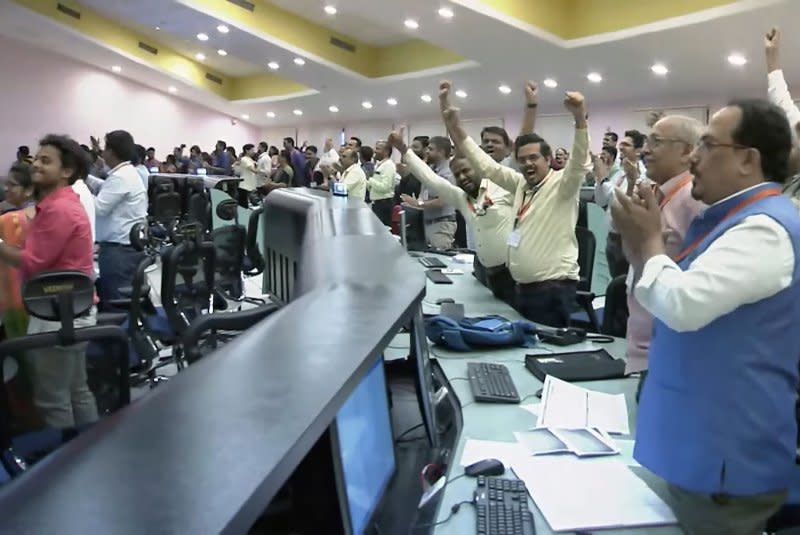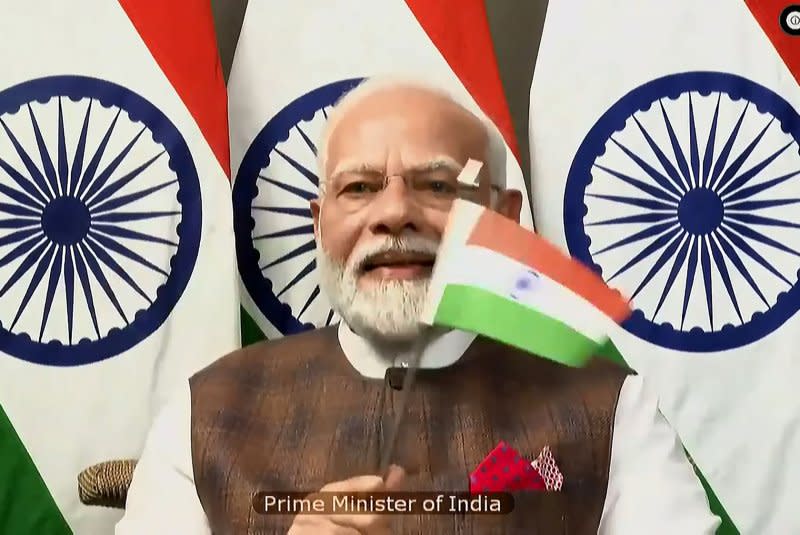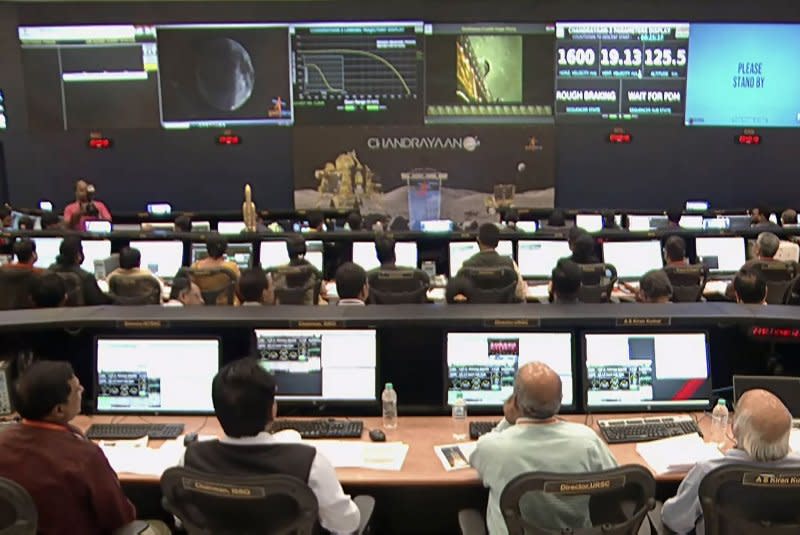India celebrates becoming first nation to land on moon's south pole

- Oops!Something went wrong.Please try again later.
Aug. 23 (UPI) -- India made history Wednesday, becoming the first to land on the south pole region of the moon.
The Indian Space Research Organization landed the unmanned Chandrayaan-3 spacecraft on the lunar surface shortly after 8:30 a.m. EDT. The mission, streamed live on YouTube, comes days after a robotic Russian spacecraft lost control and crashed trying to do the same thing.
Prime Minister Narendra Modi joined the ISRO via video from South Africa, where he is attending the BRICS Summit, waving the Indian flag as the Chandrayaan-3 safely landed on the moon. Many at the ISRO control center stood up and applauded at the altitude meter reached 0.00, indicating the spaceship had landed.
Modi gave brief comments commending the space agency on the historic landing as they prepared for the next phase, the deployment of the lunar rover.

India became the third country to make a soft landing on the moon, behind the United States, the former Soviet Union and China, and the first to land on the south pole.
There is significant scientific interest in the south pole because researchers believe it may contain frozen ice, which could be used as drinking water and help make fuel and oxygen allowing for life to be sustained there.

Chandrayaan-3's lander, the Vikram, holds a lunar rover that will be deployed to do a chemical analysis of the moon's sole pole surface in an effort to confirm some of the theories about frozen water and other elements.
While NASA's Artemis program is expected to return astronauts to the moon in 2025, India and Russia have been in a race for the first to reach the south pole. Its failed mission over the weekend has put Roscosmos considerably behind again.

Images released by the Indian space agency last weekend revealed craters on the moon's surface, which will help it avoid potential hazards. Highlighting the danger of such a landing, Japan, Israel and the United Arab Emirates have all failed to safely land on the moon before Russia's mishap.

